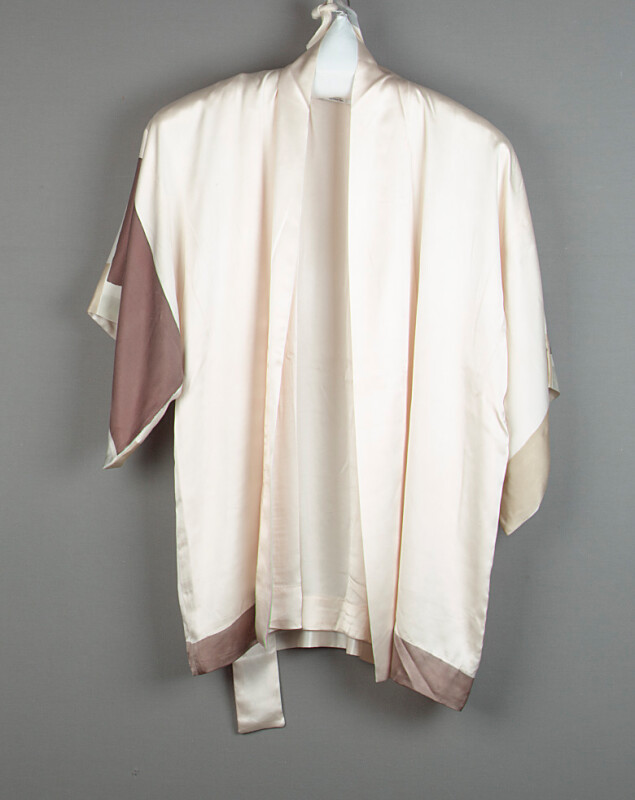
Is it really chance operations if a seemingly tangential Google search leads me to The John Cage Kimono?? From the Crown Point Press Archive, a gift to the de Young and/or Legion of Honor Fine Arts Museum of San Francisco?
And then an immediate follow-on search turns up the Crown Point Press Spring 1984 newsletter [pdf] which, the contemporary editions drama! I’ll get to the computers and fraud later, but first the “lingerie business”:
“Well, it isn’t exactly lingerie!” wrote Crown Point director Kathan Brown in her first community newsletter in two years, “I intended it that way originally, but the works turned out to sumptuous that they’ll obviously be worn ‘out.'”
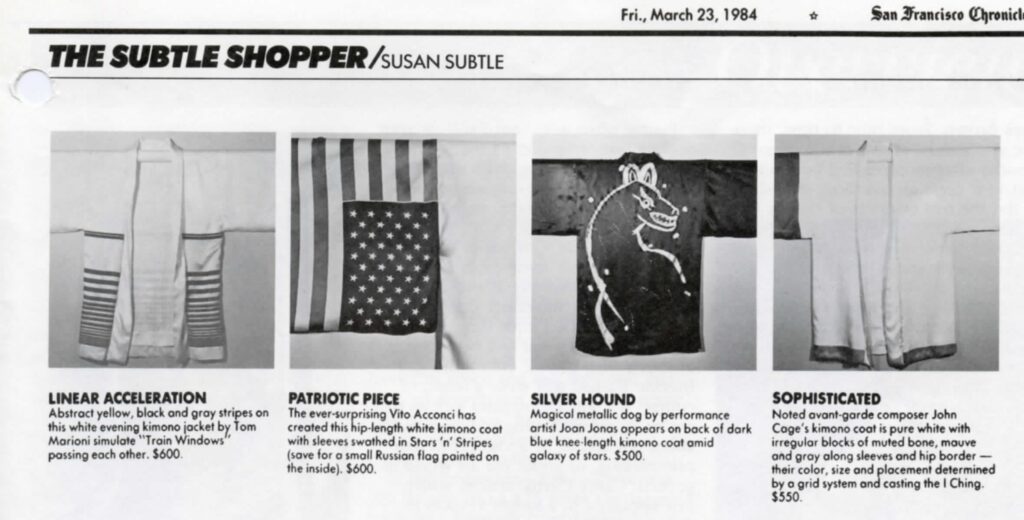
“They’re not signed or limited editions,” Brown continued, and they’re “meant to be used,” and they were going to be promoted “soon” at I. Magnin department store in San Francisco. So in Crown Point’s own conceptual sense, reaffirmed even on the previous page of the newsletter, the works were arguably not works at all, and yet.
Crown Point Pure Silks were a collection of kimono-style silk robes, designed by artists, and screenprinted or painted by hand to order. According to the SF Chronicle feature on their debut [reproduced in the newsletter], Brown was inspired to produce “stylish, wearable original paintings on cloth” by “her grandmother (a missionary wife who became a millionaire manufacturing lingerie with applique work by Philippine women.)” A lot of deep content here.
Besides Cage, twelve other artists were involved in the first Crown Point Pure Silks collection. Examples of twelve [?] designs are in the museum[s]: Vito Acconci, Robert Barry, Joel Fisher, Joan Jonas, Joan Kozloff, Sol LeWitt, Tom Marioni, Rammellzee, Ed Ruscha, Italo Scanga, Pat Steir, and William T. Wiley.
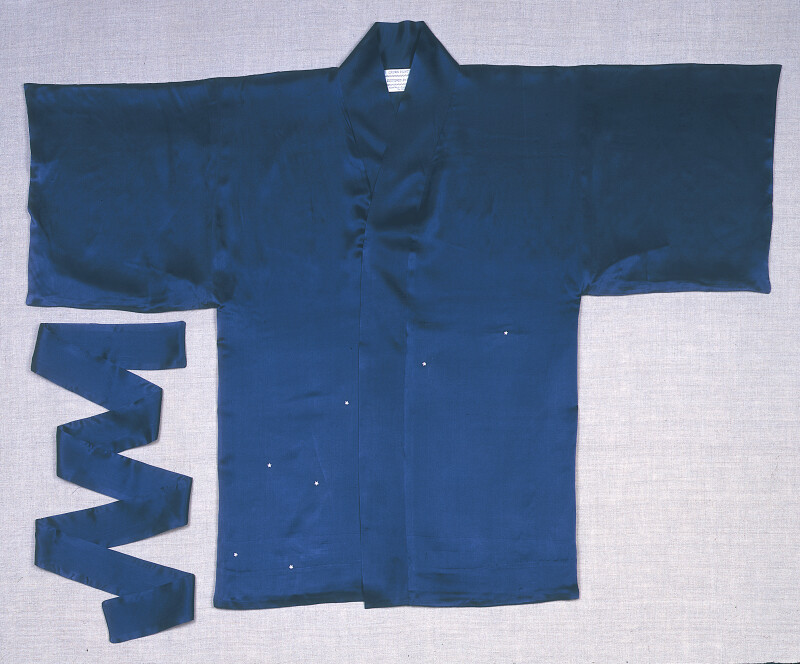
The Acconci robe in the newsletter was white, with an American flag painted on the sleeve [and a little Soviet flag hidden inside. Painfully relevant!] Meanwhile, the FAMSF’s Acconci robe—dark blue with the Big Dipper painted on it—looks like Ruscha’s, flipped over. Someone might look into that. Steir and Wiley made long robes; Fisher and Scanga made karate gi; Kozloff made matching his & her pajama outfits; Rammellzzee made a scarf. The rest are all short kimonos. [n.b. Obviously they are not. They are closer to haori, the short jacket worn over a kimono, sometimes closed or tied, but not with a sash. Let’s add this orientalized, eroticized appropriation to the deep content pile for later.]
The John Cage kimono—I cannot stop marveling at that phrase: The John Cage Kimono. Can you imagine Merce slipping it on to pad around the loft on a Saturday morning?—is hip-length white charmeuse with the size, position and color [“bone, mauve, and grey”] of the handpainted blocks determined by chance operations using the I Ching.
And yet, the kimono in the Chronicle looks identical to the Archive kimono at FAMSF. Was that the OG? Did they consult the I Ching just once to come up with the design, which was then repeated? Or did they never need to throw the yarrow sticks and break out the hexagrams again to make a second kimono?
Let’s be real. The medium of lingerie silks did not challenge these artists to produce their best work. And half-assed artist designs, whether conceptual or gestural, did not make for obviously must-have fashion, especially at $500-1000 1984 dollars.
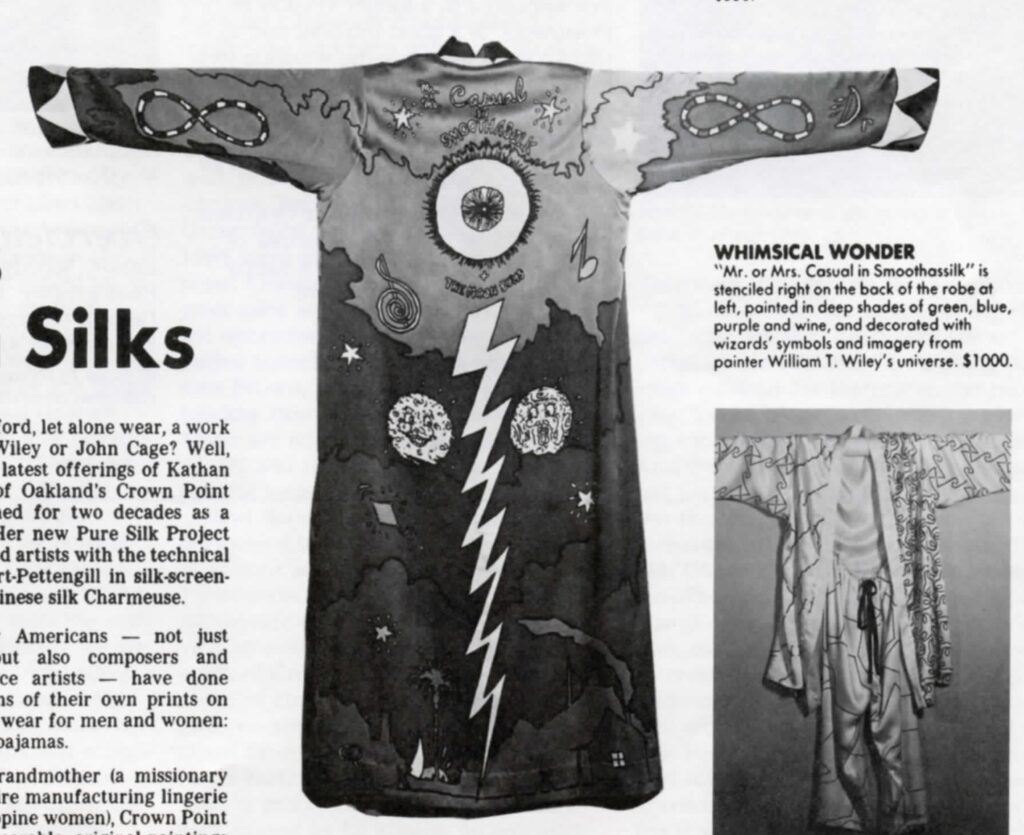
The only one who seemed to understand the assignment, so to speak, was Wiley, whose robe, painted in deep shades of green, blue, purple, and wine, was covered in characters and motifs taken straight from his freakyverse notebook cover. Across the back, above a hairy eyeball and a lightning bolt, is stenciled the phrase, “Mr or Mrs Casual in Smoothassilk.” Why does the Museums not have this one?
Forget making anyone a millionaire, it’s not clear that anyone ever even bought this lingerie. Or maybe they sold like hotcakes, and just got worn out? Maybe if they’d made them as signed limited editions after all, we’d have more than one left. Or maybe that’s enough.
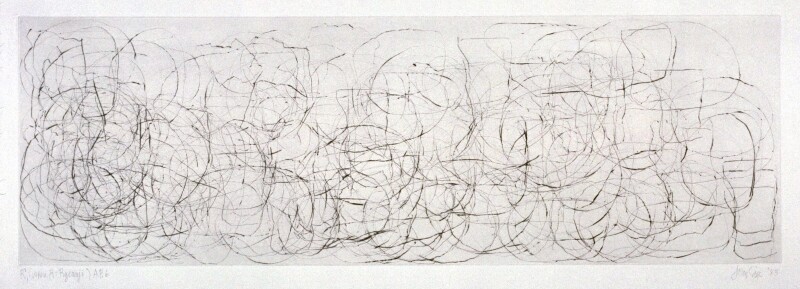
Maybe the most important thing about The John Cage Kimono is that it helped keep Cage engaged at Crown Point, where so much of his most successful visual art work lay ahead. If he’d turned down Kathan Brown’s grandmother’s dream, would he have stuck around to make his R=Ryoanji etchings, and the stones traced with paint? Or what if Crown Point Pure Silks hadn’t flopped, but became a huge hit, and Cage ended up becoming an I Ching-driven fashion designer? Randomer things have obviously happened.
